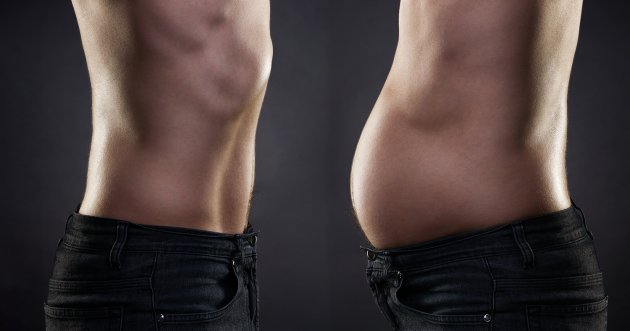
Suponsered by
Types of Intermittent Fasting and How to Do It
There are several different types of Intermittent Fasting, each with a different approach. Here, we will focus on methods that are easy to adopt, even for first-timers. We hope you will find a method that fits easily with your daily life pattern.
Types of Intermittent Fasting (1) “16/8 Method (16-hour fast)
The 16/8 method divides the day into two periods: 16 hours of fasting and 8 hours of eating. You may think, “I have to fast for 16 hours,” but the fasting time is only a few hours while awake because it includes sleeping time. If you imagine skipping breakfast and starting the day’s meals with lunch, you will understand how easy it is to incorporate. The basic pattern is to eat lunch between 12:00 and 13:00 and finish dinner between 20:00 and 21:00. During this 8-hour period, you can eat as many meals as you like, which makes it easy to continue.
Types of Intermittent Fasting (2) “5:2 Method (2-Day Fasting)
This method divides a week into two, with five days of eating and the remaining two days of fasting. Unlike the 16/8 method, the 16/8 method has less restrictive rules and is less effective, so it is recommended for people who are not used to fasting to try it first. However, please note that fasting days should not be consecutive. Instead of fasting on weekends and holidays, it is recommended to fast one day in the middle of the week, for example, either Wednesday or Saturday and Sunday.
Type of Intermittent Fasting (3) “OMAD (One Meal a Day)
I need a stoic method or I won’t get laid! For those who are not so sure, we recommend the OMAD method. This method is characterized by the simplicity of only being able to eat one meal per day during a four-hour period of your own choosing. For example, if you decide on 11~3pm, you need to eat at that time every day. There are other rules: when eating, you need to put your meals on one plate to avoid overeating, and you need to limit yourself to one caloric drink. Since the time available for eating is more limited than with other methods, this method is perfect for those who want to spend more time outside of the mealtime and for those who want to achieve a high fasting effect.
Type of Intermittent Fasting (4) “Eat-Stop-Eat Method
Lastly, the 5:2 method is a more severe version of the fasting method, in which only water is consumed for 24 hours after the last meal. Although it is often misunderstood, when Sunday is designated as a fasting day, it does not mean that the entire day of Sunday is fasted. For example, if you finish your last meal on Saturday at 19:00, you can eat after 19:00 on the following Sunday. Since you only need to leave 24 hours between meals, you can rest assured that you will not be unable to eat for the entire day. This method should also be tried one day a week for a maximum of two days.
Intermittent Fasting Tips
As with any method, it is important to keep your diet as healthy as possible so that you do not exceed your daily calorie consumption. Just because you can eat anything doesn’t mean you can’t lose weight if you consume a lot of fat and carbohydrates together. It is also important to avoid dehydration by consuming drinks that do not contain calories while fasting. As for exercise, it is efficient to do aerobic exercise during fasting and muscle training after eating. When strength training, it is important to use slightly lighter weights to prevent muscle weakness and to prevent injury, rather than using higher weights to increase muscle strength.
Points to keep in mind about Intermittent Fasting
If you find yourself feeling unwell, sleep deprived, or feeling very fatigued during Intermittent Fasting, you may not be in the right frame of mind. For some people, the stress hormones cortisol and insulin may rise more than the amount of dopamine increases, which may interfere with REM sleep. They would also be more likely to become ill if their dietary nutrients are not balanced. Of course, everyone may experience an unfamiliar sensation for the first few days of fasting, but if it persists for a long time, it is imperative to consult a doctor. It is of utmost importance to take it easy and experiment when doing intermittent fasting.
What happens at the beginning and after Intermittent Fasting?
When starting an intermittent fasting program, allow a week or two for each method, rather than following the prescribed times from the beginning. For example, for the 16/8 method, start fasting for 12 hours, or change the 5:2 method to the 6:1 method. Another trick is to consume a lot of fiber before starting to improve your body constitution. The first meal after fasting should be something that is as easy on the body as possible, such as porridge, brown rice, buckwheat noodles, whole grain products, and protein, which is an easy way to consume protein and vitamins. Try to eat a well-balanced diet that does not irritate the gastrointestinal tract as much as possible.







![What are the specific 5 changes that muscle training can bring to a man? [“The truth as experienced by practitioners.”]](https://otokomaeken.com/wp-content/uploads/2023/12/3ecb709c1f1613850249ba743b4b1457-630x331.jpg)























![6 self-weight menus for leg training! Effective training for toning the lower body [ supervised by a professional ].](https://otokomaeken.com/wp-content/uploads/2023/03/2232-115x60.jpg)